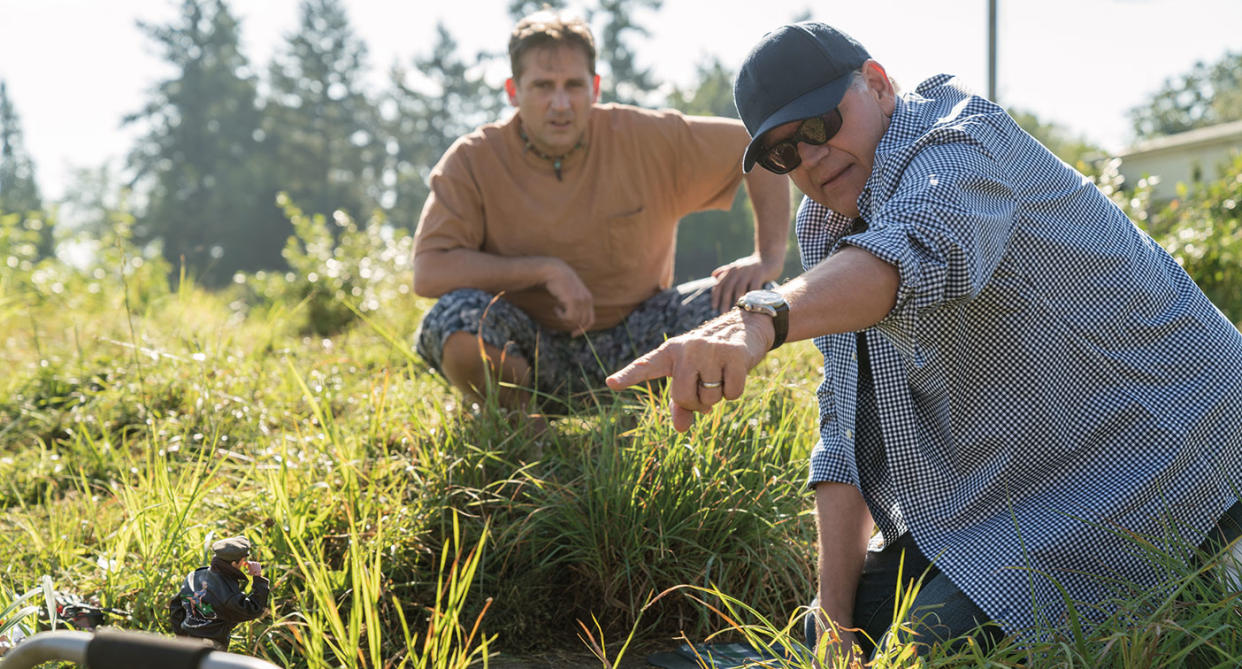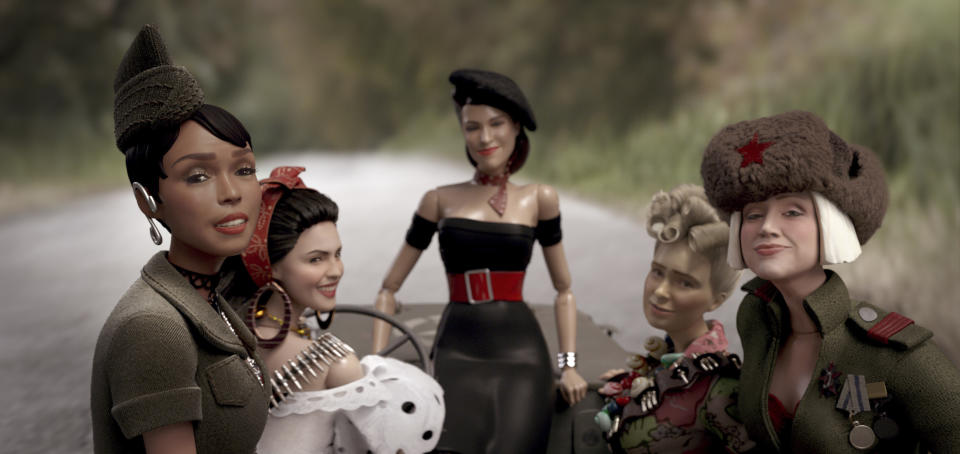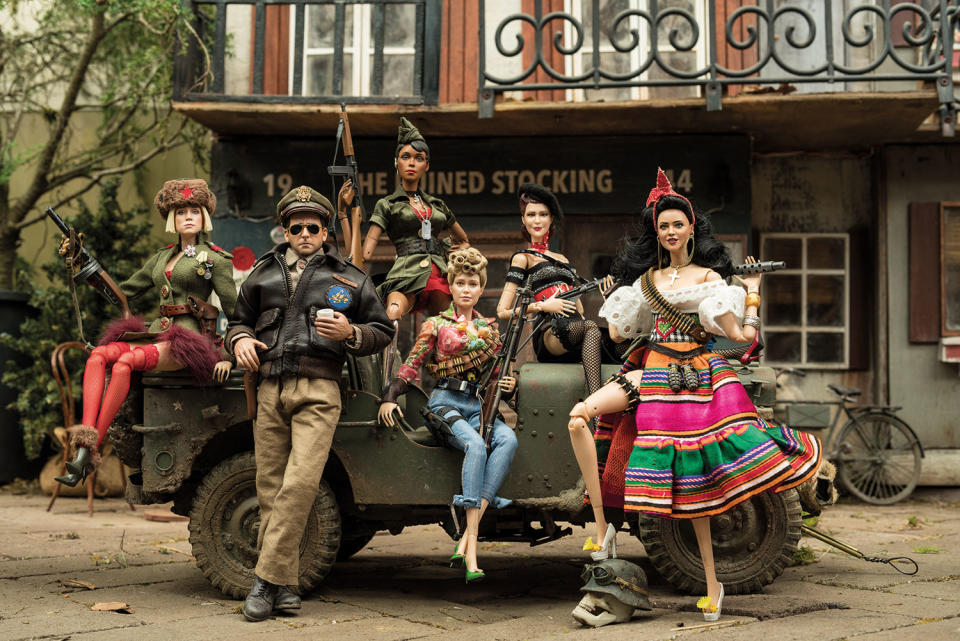Robert Zemeckis on 'Welcome To Marwen', 'Back To The Future', and 'Roger Rabbit 2'

Robert Zemeckis, the filmmaker responsible for some of the most iconic American movies of the last 40 years including Back To The Future, Forrest Gump, and Death Becomes Her, has a new film out in cinemas next week – Welcome To Marwen.
It’s a dramatic retelling of the story first told in the acclaimed 2010 documentary Marwencol, of Mark Hogancamp, an artist whose life is changed forever when he’s dealt a brutal beating by a gang of thugs.
The attack deprives Mark (played in the film by Steve Carell) of his memory and, as part of his therapy, the artist builds a toy WW2 town – Marwen – which he populates with dolls inspired by people in his life, and Hoagie, his doll avatar.
Zemeckis’ film brings the world of Marwen to life using state of the art performance capture technology and eye-popping CGI, making the film a visual treat.
We spoke with Zemeckis about how the film was brought to life, as well as probing him about the future of two of his most famous films.
Yahoo Movies UK: Why was Welcome To Marwen your next project?
Robert Zemeckis: When I saw the original documentary, I was very taken by this idea of the film speaking to the healing power of art, which is something that I was immediately attracted to, and identified with. I also think it’s a universal idea that people can understand, so that was the first thing.
The second thing was this world that was created by our hero, being this doll world. He was taking these still photographs, but there were these elaborate, traumatic stories that were taking place in his imagination. And I thought, wouldn’t that be interesting to be able to put those on the screen.
So between those two ideas, that was what attracted me to the story.
With the story already told in the documentary, there were many different ways you could have done it as a drama, so how did you land on this narrative structure?

I just always knew that I wanted the film to start in the imaginary doll world, and then i’d take us into the real world, and then we start to learn about this character. So by locking on to that as the start of the movie, created a narrative timeline that could only be done in one way. So I made the choice to have the audience understand the character from his emotional core, then to reveal exactly what happened to him later on in the story.
How much input did the real Mark Hogencamp have in the film?
Mark was extremely respectful of our process and did not want to be a part of that. He understand that this was going to be a very loose dramatisation and not be his life exactly how it is in reality, and it couldn’t be.
He read the screenplay and saw what we were doing, and saw the images, and the trailers. Steve and I went and spent time with him, so he’s involved in that way but not in collaborating with developing the story.
How were the scenes in Marwen filmed?
It was done by using performance capture, but a much more advanced version of it than has been done before. So the actors play their doll characters, and they perform the entire performance for the dolls. We record them in a 3D volume, and then also lens cameras record their facial performance, and we digitally wrap it onto the doll avatar.
Did they have sets to work with?
No. And they didn’t have costumes, it was grey mo-cap leotards with markers. There’s nothing in the set. So it’s like doing black box theatre, there’s nothing in the set.
Obviously there’s props and chairs and furniture that we put in the set, but as far as them having this world that they’re in, that is all done later virtually.
Did you use real life dolls for reference, Action Man or Barbies for example?

There’s a more high end brand of action figure, than Action Man or Barbie, that are the ones that the real aficionados use, who collect them, and use them as hobbyists. Those are what we used more than the off-the-shelf dolls. The high end ones are like the ones Mark used in his work as well.
What was the most complicated part of the VFX process?
The most complicated part wasn’t so much during the shooting, it was in the design of the movie. I wanted to make sure that people took the emotional essence of the actors’ performances and translate it into the doll. I thought it was important that the audience always feels that actress or actor was playing the doll character.
So that was where we spent a lot of time in R and D, and did a lot of testing to make sure that we were actually making that… that the performance of the live action actor was being very specifically applied to the doll. That was the trickiest part.
They did a good job.
When the first trailer came out, another trailer came along quite quickly, which many suspected was a course correction for the marketing of the film, what’s the story behind that?
I have to stay away from the marketing because I don’t think I’m good at it, because I have no objectivity. I’m too close to the film. Every time I start to think about how the film should be marketed, everything that I like tests really badly. And everything that I find confusing, that tests very strongly. So it’s an art form that I don’t understand.

I think what happened on the trailers, there was a second trailer that came out that was done by the international division, and the first trailer was done by the marketing division, and so they’d both tested very high, and I liked them both, so they just said let’s put both of them out.
The first one has a bit more humour in it than the second one, but they both worked perfectly fine.
Back To The Future topped a poll of films people want to see more of, you’ve been adamantly against a fourth film, are you still?
Oh god yes. But I think what the poll is saying… they asked a specific question, so I guess they felt it was important to spend money to poll the world, and ask this question, but don’t you think we could all have just given them the same answer? It confirms what we all know, but what I think the fans are really saying is that we really like this movie and if it were possible I’d like more of it. But they understand that it can’t be done.
It’s the 30th anniversary of Who Framed Roger Rabbit this year. You’ve said Disney isn’t keen on a sequel, but surely in this era of streaming content, there must be room for it now?
I don’t think so. I don’t know where it fits in in their universe. There’s no princess in it, so I don’t know where that would be.
There’s a wonderful script sitting at Disney that is really good, but I don’t think it’s on their radar.
Welcome To Marwen is in cinemas from New Year’s Day, 1 January.
Read more
Back To The Future stars reunited
Classic movies that will never be remade
The best movies of 2018

 Yahoo Movies
Yahoo Movies 

